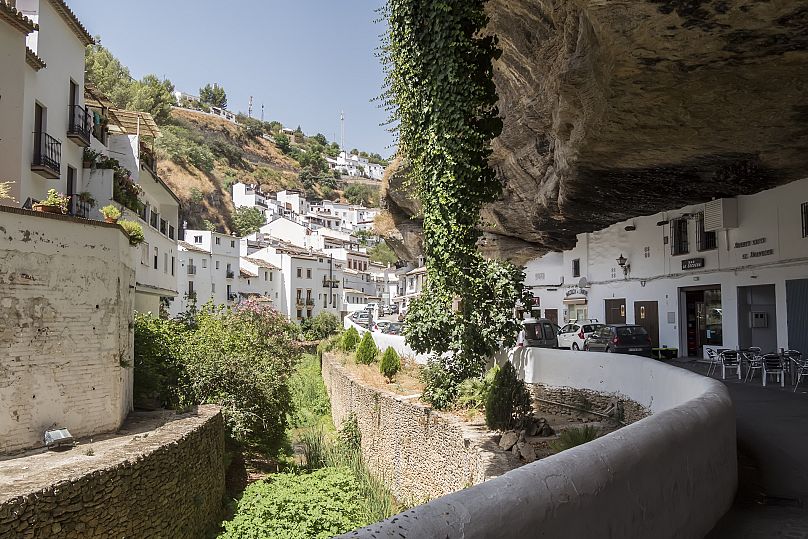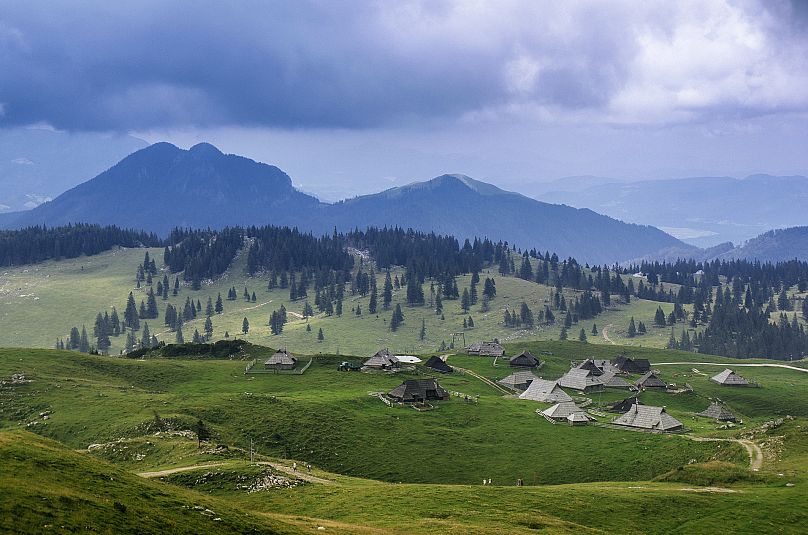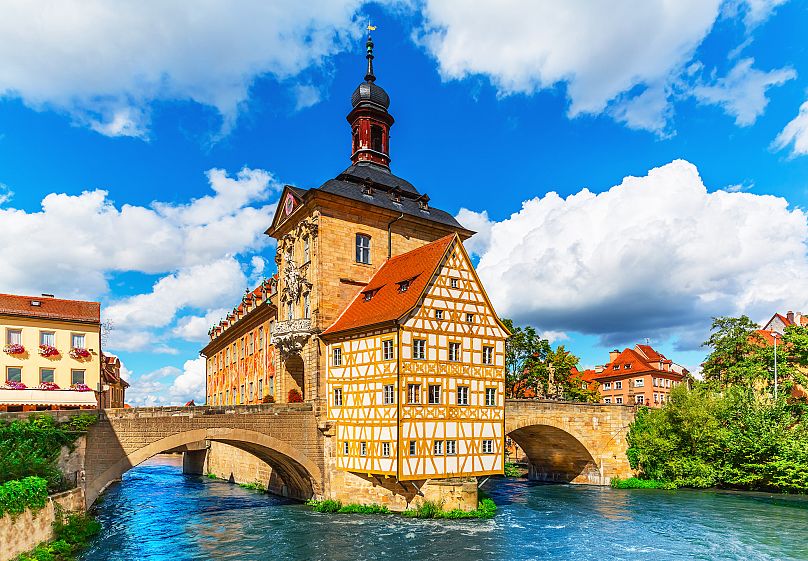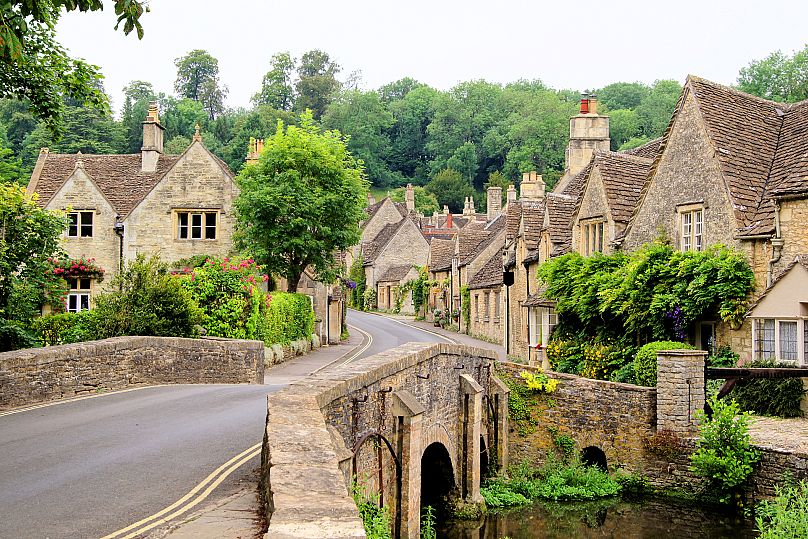From snow-covered villages to towns carved into the cliffside, there are many storybook destinations to be found across Europe.
When it comes to towns and villages worthy of a Brothers Grimm story, nowhere does it quite like Europe.
From snow-covered settlements at the edge of the world to whitewashed towns carved into the cliffside, there’s some fairytale magic to be found in each of these European destinations.
Setenil de las Bodegas, Spain
Nestled among the olive groves of northeastern Cadiz is Setenil de las Bodegas, a 12th-century town carved entirely out of the rock.
Until recently, economic hardships and lack of opportunities for young people meant this historic white pueblo (Setenil was one of the last strongholds of the Moorish Empire) was on the brink of collapse.
But recent investment in Setenil de las Bodegas has seen this beautiful Andalucian town come back to life. Restored cave houses now serve as stylish Airbnbs and boutique homes, and underground wine bars, restaurants and specialist food shops selling the region’s famous cold cuts and olive oil line the rock-covered streets.
While you’re here, be sure to try sopa cortijera, a soup made from tomatoes and green peppers and topped with asparagus, cured ham, and a poached egg.
Alberobello, Italy
Puglia’s fantasy-like land of Alberobello is a town made up of over 1500 Trulli - cylindrical whitewashed homes topped with grey dry stone conical roofs. The exact origin of these unusual limestone dwellings isn’t clear, but the oldest Trullo in Alberobello dates back to the 14th century.
Some historians believe that these low-slung, mortarless homes were popular in the late Middle Ages because they were easy to dismantle, meaning inhabitants could avoid taxes. Today, these iconic dry-wall constructions still serve as residences, as well as restaurants, B&B’s, and souvenir shops to accommodate the rising number of tourists.
To avoid the bus tours, arrive early in the morning or, even better, plan your trip during the low season (October-April).
Velika Planina, Slovenia
High up in Slovenia’s Kamnik-Savinja Alps lies Velika Planina, one of Europe’s last traditional herdsmen settlements. Backed by snow-capped peaks and dotted with hobbit house-like huts, this small mountain village resembles somewhere between J. R. R. Tolkien's Middle Earth and C. S. Lewis’s Narnia (parts of The Chronicles of Narnia films were in fact filmed in Slovenia).
A cable car and ski lift whizz visitors up to the settlement, but there’s also a well-marked (and beautiful) trail to the summit. Once there, you can sample the herdsmen’s hand-churned Trnic cheese, feast on štruklji (silky smooth dumplings with cottage cheese), or hike one of the many hiking and biking routes that traverse the cow-dotted pastures.
For a deeper insight into the lives of Velika Planina herdsmen, stay the night in one of the guest farmhouses.
Bamberg, Germany
A UNESCO World Heritage Site since 1993, Bamberg boasts one of Europe’s largest and best-preserved old town centres. This photogenic Bavarian town is built along the river Regnitz, causing ancient canals and medieval stone bridges to intersect many of its narrow cobbled streets and ornate Baroque buildings.
Bamberg’s old town is best explored by foot or bike, allowing ample time to soak up the beautiful architecture and sample Bamberg's rauchbier, the town’s famous smoked beer. If you’re feeling peckish, pair your smoked brew with a plate of schäuferla, pork shoulder that’s slow-roasted in rauchbier and served with potato dumplings and cabbage.
Reine, Norway
The postcard image of Norway’s Lofoten Islands, Reine is a 314-person village at the foot of Reinebringen’s granite peaks.
Hikers prefer to visit in the summer, but the town’s iconic red and white rorbuer – stilted fishermen’s huts hanging over the town’s calm, crystal-clear lagoon – look even more fairytale-like when sprouting out of a carpet of white snow.
Add to that the evening spectacle of the Northern Lights, deserted white-sand beaches, and the cerulean-blue of Lofoten’s fjords, and it’s no wonder that travellers consider this tiny fishing village to be one of the most beautiful not just in Europe, but in the world.
Castle Combe, England
This tiny Wiltshire village often makes it onto the UK’s most beautiful lists, and it’s easy to see why.
Each of the honey-coloured stone cottages, which turn a deep golden come sunset, have changed little since they were built in the 16th century, where they housed the Cotswolds’ most prominent weavers during the height of England’s wool trade.
Today, Castle Combe is the idyllic base from which to explore the woodland trails of the Cotswolds, feast on roast beef with lashings of red-wine gravy by the fire, and sample some of the country’s hoppiest craft ales or daintiest afternoon teas. To avoid the crowds and to soak up even more of the fairytale vibes, visit in winter.













![Balate Dorin/Getty Images/iStockphoto [Copyright Getty images]](https://static.euronews.com/articles/stories/04/97/67/88/808x679_cmsv2_06ade3b2-0199-5657-a221-0ecfc5078afe-4976788.jpg)


![izhairguns/Rinat Yamaev www.fotoizh.ru (Rinat Yamaev www.fotoizh.ru (Photographer) - [None]](https://static.euronews.com/articles/stories/04/97/67/88/808x487_cmsv2_daa0dfd7-bbe3-5922-93a7-ac02ca9d33ba-4976788.jpg)
